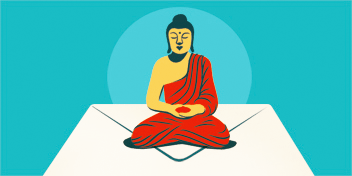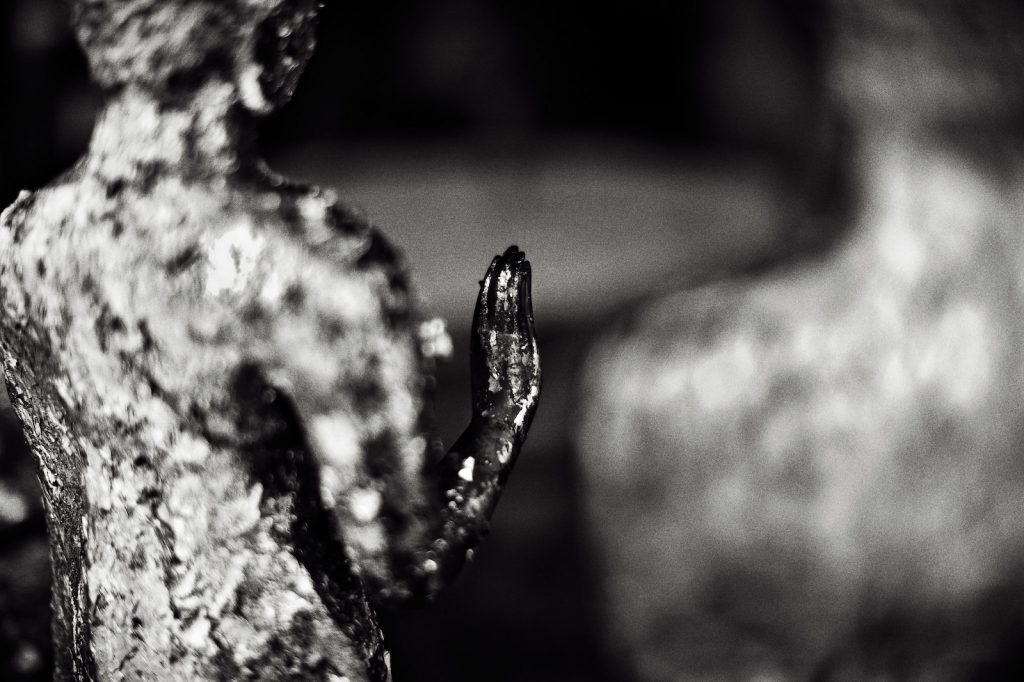When George Floyd’s murderer, former police officer Derek Chauvin, was found guilty on all charges on April 21, 2021, the world breathed a sigh of fleeting relief. I sighed too, but the breath was not my own. The emanation was an ancestral exhale for accountability, and it rattled my foundation in a mixture of grief and frustration. There was no joy. There was no rest. There was no peace.
Four days before the prosecution rested in the Chauvin case, Daunte Wright, a 20-year-old Black man, was shot by a Brooklyn Center, Minnesota, police officer who mistook her own gun for a taser. Just over a week later, Andrew Brown, Jr., 42, would be shot in the back of the head while driving away from police in North Carolina. Between these killings, Adam Toledo, 13, was shot to death by an officer in Chicago, and Ma’Khia Bryant, 16, was fatally shot by an officer in Ohio. For many Black, indigenous, and other people of color, every shooting is retraumatizing.
Police brutality, combined with historical trauma’s cumulative effects, structural racism, health disparities, disadvantage, and poverty, all negatively impact African Americans. We are affected on a deeply cellular level, and our suffering is a bitter seduction. Untreated, pain feeds despair, an idol to our suffering—but there is a path forward. We can find our way by embracing and exploring African Americans who were bodhisattvas, and as such, provide pathways to heal our collective, historical trauma.
A bodhisattva is someone who aspires to be a buddha but delays reaching nirvana in order to help others reach enlightenment. By extension, we might consider the Black Bodhisattvas to be those of African and African American descent who, by example, lead us toward a path of liberation, provide inspiration, direction, and healing.
The Black Bodhisattva and first African American woman to speak publicly about women’s rights was Maria W. Stewart [1803-1879], who urged us to “possess the spirit of independence” and “sue for your rights.” Stewart wrote these words in 1831, in a pamphlet that was distributed before her public speaking engagements. She spoke to mixed crowds of both Blacks and whites, men and women, which was uncommon at the time. Stewart’s call to legal action is an example of the preparation and tools to confront white supremacy. This struggle will throw innumerable challenges as long as white supremacy is allowed to inflict its dangerous, oppressive destruction on Black and brown bodies and livelihood. Every stage of the struggle for justice will be met with a counterattack designed to preserve the status quo. The challenge is to be increasingly more skillful at managing emotional pain and equipping ourselves with the instruments to address inequality without succumbing to violence.
As a Black, queer woman who grew up in the predominately white communities of Northern Minnesota, I have spent a lifetime searching for Black Bodhisattvas to nurture, guide, lead me toward liberation. I was born exactly 58 years to the day after Harriet Tubman’s death. Tubman [1822-1913] is my kindred spirit, and her example would become the guidepost for my activism, artistry, and work as an academic in the service of my people. If the role of the bodhisattva as an enlightened being is to delay nirvana to assist others in finding liberation compassionately, then Tubman’s life and legacy align with that experience. In approximately 10 years and 13 trips, she led over 70 enslaved people to freedom and advised at least 70 more to make the journey. During the Civil War, she was recruited by the Union Army to assist fugitive slaves, and headed espionage and scouting missions that garnered crucial intelligence. For Tubman, there was no greater purpose than the freedom of her people.
But what does it mean to march on toward freedom? Awakening? In Buddhism, awakening means to be liberated from perpetual suffering. For African Americans, awakening in one sense means overcoming the clutches of white supremacy culture as a community, as a nation. “Nations, like plants and human beings, grow. And if the development is thwarted, they are dwarfed and overshadowed,” wrote the Black Bodhisattva Claude McKay [1889-1948]. McKay was a poet and novelist of the Harlem Renaissance whose poetry and prose were and continue to be a source of liberation. He reminds us that individuals, communities, and governments all can change, grow, evolve, or revolutionize.
From McKay’s instructions, a galvanized response to oppression means the nation’s integrity will no longer be thwarted. We may march on toward freedom but not be seduced by the divisive tools of white supremacy culture. Black liberator, activist, and author Audre Lorde [1934-1992] proclaimed, “The master’s tools will never dismantle the master’s house!” The struggle cannot be won with the same dehumanizing beliefs, policies, procedures, and laws that got us here in the first place. When violence erupts, when despair knocks on the door of the heart, seek silence and stillness within because the right direction emerges in the sanctity of that which cannot be moved. In this way, we resist.
The Black Bodhisattva assures us that the path to end suffering is consistent with the teachings, the dharma, the way. We do not have to reinvent the wheel.
In the words of the nineteenth-century author, lecturer, and anti-enslavement activist Frances Harper [1825-1911], “My hands were weak, but I reached them out to feebler ones than mine, and over the shadow of my life Stole the light of a peace divine.” Fostering community allows us to resist despair as we ease attachments to our suffering by cultivating loving-kindness, empathetic joy, compassion, and equanimity. We might come to recognize that it is possible love and rage can occupy the same place at the same time. In equanimity, we are neither passionate nor dispassionate about any of it. Emotions are simply messages that we are experiencing something favorable or unfavorable. What is good or unfavorable at the moment may have extraordinarily little to do with the ultimate goal, which is a just and equitable society. It is the same as saying, “keep your eyes on the prize.” So, restraint becomes an offering of the wise and loving-kindness, empathetic joy, and compassion, a healing balm on exposed wounds.
The Black Bodhisattva assures us that the path to end suffering is consistent with the teachings, the dharma, the way. We do not have to reinvent the wheel. Fundamentally, this work is not meant to be conducted alone. The sangha, initially understood as a community of Buddhist monastics in study and practice together; today implies something slightly different (at least in Western lay communities). Here, the sangha is a community of healers, activists, mobilizers, poets, prophets, truth-tellers, and fellow Buddhists in whom we gain assistance. Seek them out and wear their support like an invincible shield.
The historical Black Bodhisattvas were not practicing Buddhists. However, they embodied many principles of Buddhism and community. We draw from their examples in these contemporary times as we form circles of support that promote liberation.
May we make ourselves students of loving-kindness. May we learn to delight in the joy of another wherever it may be found. May we sponsor a heart that seeks to end the suffering of others. May we recognize that these principles of Buddhism are the true north. In the end, the Black Bodhisattva guides the path. May we all find our way.
Thank you for subscribing to Tricycle! As a nonprofit, we depend on readers like you to keep Buddhist teachings and practices widely available.

